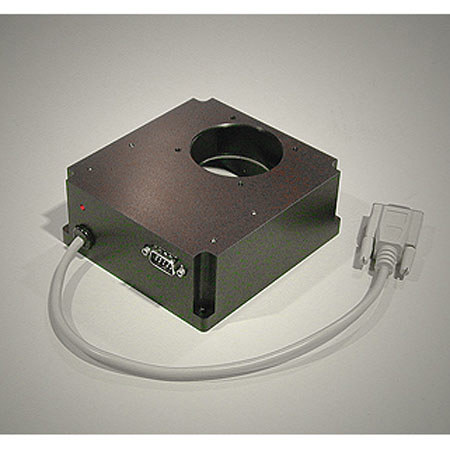
Share:
SBIG AO-8 Adaptive Optics for ST Series Cameras
SKU: SBAO8 MFR: AO-8
Earn VIP Reward PointsKey Features
- Achieve sharper astrophotography images with adaptive optics for your SBIG ST camera.
- Enhance your telescope's resolution, combating atmospheric turbulence for clearer views.
- Perfect for long-exposure astrophotography, minimizing star trailing and image distortion.
- Compatible with SBIG ST-7 to ST-2000 cameras, ensuring seamless integration and performance.
- Improve your telescope's optical quality, revealing finer details in celestial objects.
- Maximize your telescope's potential, ideal for serious astrophotographers seeking peak clarity.
Special Order?Estimated to Ship: 12/28/2025
Free Shipping
See Options
1
Need help? Ask our experts.
Overview
Compare
Specs
Protection
Q&A
Questions & Answers
FAQ
What cameras is the SBIG AO-8 Adaptive Optics compatible with?
The SBIG AO-8 Adaptive Optics is exclusively compatible with ST-7/8/9/10/2000 USB cameras.
Do I need extra cables to power or control the SBIG AO-8 Adaptive Optics?
No, the SBIG AO-8 Adaptive Optics draws power and receives commands directly from the camera through a short cable connected to the camera's I2C port. No additional external cables are required for power or control.
Can I add other I2C accessories to the SBIG AO-8 Adaptive Optics?
Yes, the SBIG AO-8 Adaptive Optics is equipped with an I2C output port, ensuring full compatibility with other I2C accessories you may wish to incorporate into your system, such as a filter wheel or auto-guider.
What is the main benefit of using the SBIG AO-8 Adaptive Optics?
The SBIG AO-8 Adaptive Optics is designed to help you unlock the maximum image resolution that your telescope and sight can deliver, enhancing your ability to capture the cosmos in stunning detail.
Reviews about this item
Review Summary
SBIG AO-8 Adaptive Optics Specifications
Compatibility
ST-7, ST-8, ST-9, ST-10 and ST-2000 Cameras
About SBIG AO-8 Adaptive Optics
Bring your astrophotography to the next level with the SBIG AO-8 Adaptive Optics, a second-generation system specifically engineered for SBIG ST-series cameras. This advanced adaptive optics system is meticulously designed to help you unlock the maximum image resolution that your telescope and sight can deliver.
Exclusively compatible with ST-7/8/9/10/2000 USB cameras, the SBIG AO-8 Adaptive Optics is a compact unit that seamlessly integrates with your existing setup. It draws power and receives commands directly from the camera through a short cable connected to the camera's I2C port, eliminating the need for additional external cables for power or control.
Moreover, the SBIG AO-8 Adaptive Optics is equipped with an I2C output port, ensuring full compatibility with other I2C accessories you may wish to incorporate into your system, such as a filter wheel or auto-guider. This feature makes the SBIG AO-8 a versatile addition to your astrophotography equipment, enhancing your ability to capture the cosmos in stunning detail.
SBIG AO-8 Adaptive Optics Features
- The SBIG AO-8 Adaptive Optics is a closed loop adaptive optics system for dual-sensor ST-series USB cameras, including the ST-7, ST-8, ST-9, ST-10 and ST-2000
- The SBIG AO-8 adaptive optics will dramatically improve imaging by reducing the affects of atmospheric turbulence, vibrations and periodic error
- To use the SBIG AO-8 adaptive optics with an off-axis guider, the optional SBIG Remote Guide Head needs to be installed
Key Features
- Achieve sharper astrophotography images with adaptive optics for your SBIG ST camera.
- Enhance your telescope's resolution, combating atmospheric turbulence for clearer views.
- Perfect for long-exposure astrophotography, minimizing star trailing and image distortion.
- Compatible with SBIG ST-7 to ST-2000 cameras, ensuring seamless integration and performance.
- Improve your telescope's optical quality, revealing finer details in celestial objects.
- Maximize your telescope's potential, ideal for serious astrophotographers seeking peak clarity.
